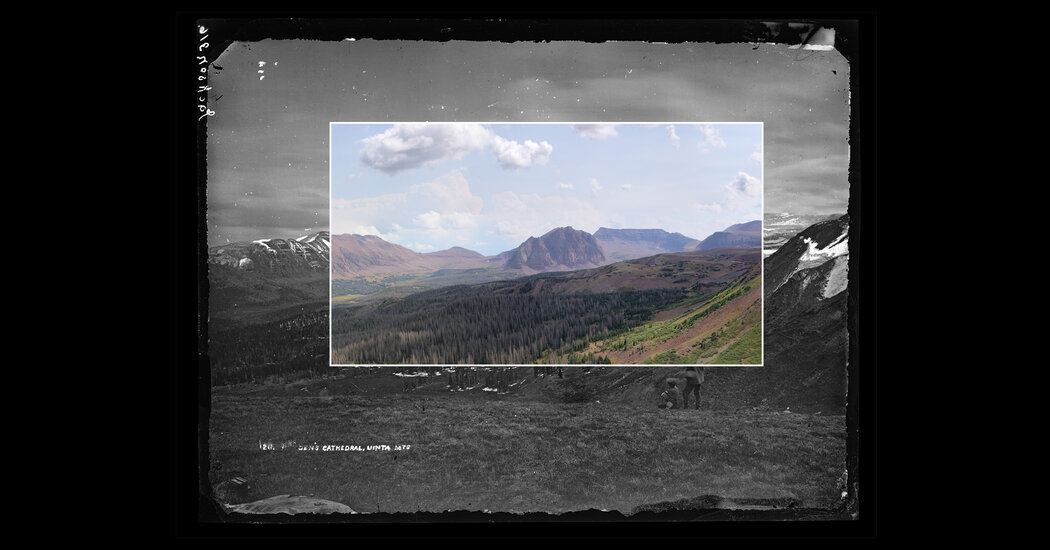For 30 miles we bounce along a dirt road in southwestern Wyoming, heading toward a jagged skyline. It’s early September and the aspens are starting to turn yellow. As we climb toward the mountains, the air grows colder. Soon the road will see snowfall.
Jeff Munroe, a professor of geology at Middlebury College in Vermont, is taking us back in time. Our small group of scientists and adventurers will be backpacking into the Uinta Mountains to recreate a series of photographs made in 1870 by William Henry Jackson, a photographer who worked for the United States Geological Survey under the direction of the geologist Ferdinand Vandeveer Hayden. Jackson and Hayden documented the landscape and natural resources of the Wyoming Territory in support of U.S. expansion. We’re going to see exactly how the environment has changed.
Re-photography — capturing the same scene from the same location after a span of time — enables scientists to track long-term changes such as alpine tree-line rise, shoreline erosion and glacial retreat, which are difficult to study otherwise. The technique can be more challenging than it sounds. Finding the general location is the first hurdle, as place names change over time and descriptions are separated from historical images. Next, researchers must identify the precise coordinates of the original tripod placement, which can be especially vexing in landscapes prone to rockslides or erosion. Subtle variations in photographic equipment can also make it hard to create matching images as cameras, films and lens sizes change.
In our case, the difficult terrain, which was now coupled with unsettled weather, meant that we might not even be able to reach the general area, let alone find half a dozen tripod locations. And although some re-photography projects rely on drones to scout their locations, we’ll be doing all our work on foot, as Jackson had.
Jeff first rephotographed these Uinta sites in 2001. What he saw then would have been unimaginable in the 19th century. Elements of the landscape that Hayden described as everlasting, from the “perpetual snows” to the “upper limit” of the tree line, were changing. Over the intervening 131 years, the climate had warmed. Ecological changes were plainly visible in Jeff’s new photographs. Trees had filled in the open meadows and ascended the mountain slopes. Lower-altitude species had established themselves higher up. All this change was squeezing the unique high alpine areas and the…
Click Here to Read the Full Original Article at NYT > Travel…
